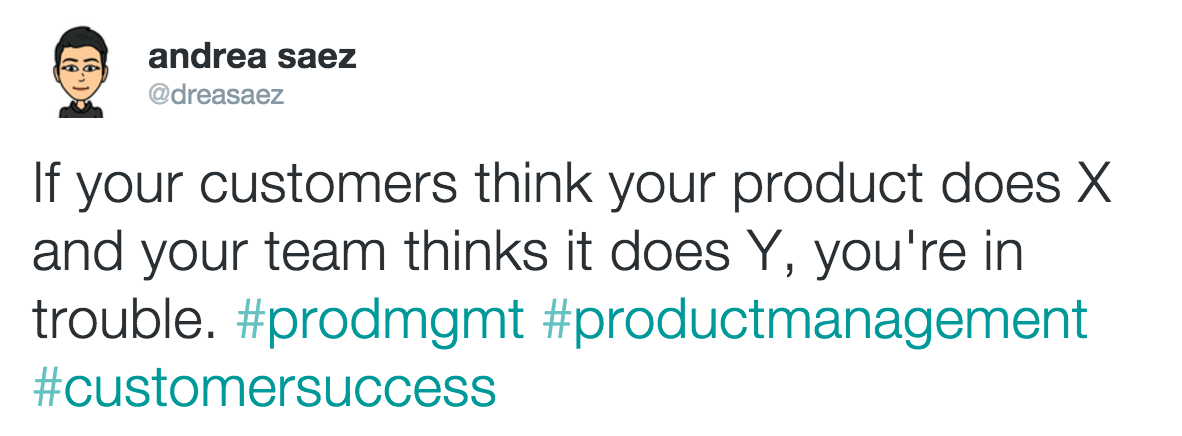What’s The First Thing A New Product Manager Should Do?
You have a lot of general advice to pick from when you start your new job as a product manager.
Usually it’s to listen, learn and absorb everything you can about your product, its market and your team roles. That’s all correct. If you haven’t set up meetings with everyone at the company (or a rep from each team, depending on the size of the company) and started to get in touch with customers to set up interviews, that’s exactly what you should be doing. So far, so good!
But here’s the red flag that I wish someone had told me to look out for when I started my first PM role: “If your customers think your product does X and your team thinks your product does Y, you’re in trouble.”
Because if you do find that your CPO describes your product differently from your customer support reps, there’s been a communication breakdown that isn’t going to fix itself. That right there is the next six months of your work cut out for you.
It doesn’t matter what you thought your job would look like – now you drop your other plans, your assumptions around what you thought your role would look like, and work on addressing a company that’s pulling your product in different directions.
What you’re looking out for during this initial orientation period are flaws, discrepancies and even the language they use to describe your product.
And be glad you’re doing this now – because these are symptoms of deeper problems within your organization that you either fix now or suffer from down the road.
First, try the product as a new user
Right before you do start having those 1-to-1 chats with your colleagues, I always recommend opening up an account as a new user and and taking notes as you go. You only have one shot at a first impression, so take note of subtle points of confusion or frustration as you navigate through your product. If you’re experiencing problems, chances are your customers are too. As you make your way through, focus on the following:
- What are user expectations?
- Do those expectations match up to the customer experience?
You’re paying attention to two things here: the way the product itself works and whether it matches up to the way the product has been communicated. As product manager, get used to having both hats on. You’ll always be working towards syncing your product with the marketing and customer service that supports it.
For example, if your marketing automation company has put in a lot of effort to market an A/B testing section but hasn’t pushed out any resources or customer education around using it, this is something you would need to work out a plan for. After all, your success as a PM depends on metrics like feature adoption rates and usage intensity.
Anyway, don’t worry about what changes you’re going to apply just yet. Just figure out what the current issues are so you can bring them up during discussions with your team members. Decisions come later.
What you’re looking for during your 1-on-1s
Now that you’ve dug around on your own, you have an angle for approaching 1-on-1 chats with your teammates. When you do go in, start broadly:
- What do they think the product vision is?
- What are their frustrations?
- What would they like to see improved?
Look for the way they describe or pitch the product to you – and how they feel the product actually stacks up against it. Repeat the same sort of exercise with a handful of customers and end users.
Keep track of the differences you observe from team to team, from your CEO to your sales and support teams. Your first actions as PM will revolve around finding out why these discrepancies are taking place and setting out to fix them so they don’t happen on your watch.
Starting a product manager role is definitely overwhelming, but at least for now, all you have to do is listen.


